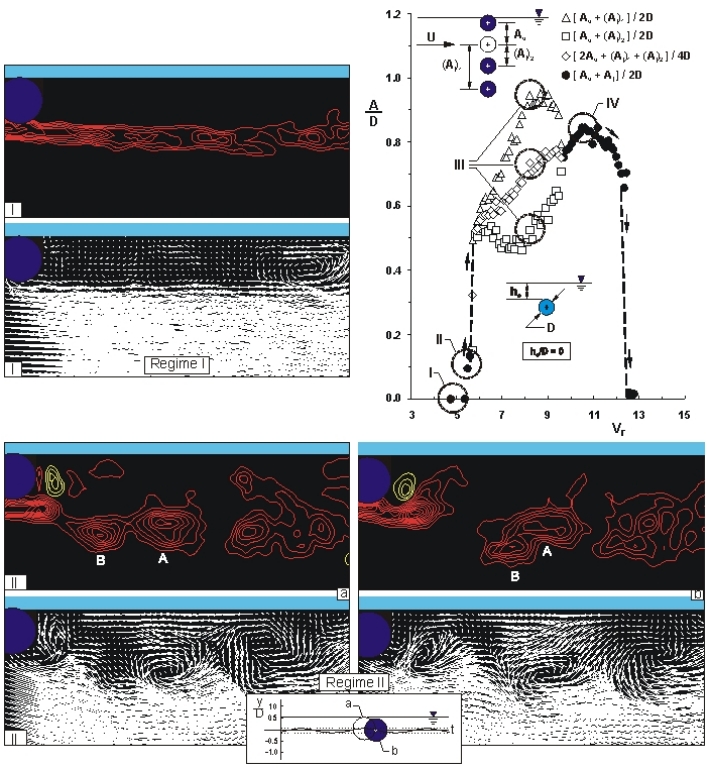You are here
Home ›Vortex Patterns due to Self-Excited Oscillations of a Horizontal Cylinder at and near a Free-Surface: Part A
Vortex patterns due to self-excited oscillations of a horizontal cylinder at and near a free-surface. A horizontal cylinder is elastically mounted using a cantilever arrangement. As the value of reduced velocity Vr is increased, the amplitude A of oscillation relative to the cylinder diameter D shows several distinct regimes of oscillation, as represented in the schematic. Regime I corresponds to the case of zero oscillation amplitude. Well-defined vortices do not occur in the near-wake region, which is in accord with the theoretical concept of Dimas and Triantafyllou for a surface wake. A further increase of Vr yields significant oscillations of the cylinder in regime II . In this case, a single-sided vortex street arises due to the coalescence of adjacent vorticity concentrations A and B. This type of self-excited oscillation demonstrates that low amplitude, limit-cycle oscillations in absence of a fully-formed Kármán-like vortex street. Subsequent regimes III and IV are addressed in the next layout of images. For regime I, Re = UD/ν = 645 and Fr = U/ (gD)0.5= 0.14.
A horizontal, elastically-mounted cylinder of low mass-damping parameter is oriented horizontally at various depths of submergence beneath a free-surface. Variations of the velocity of the steady inflow yield a number of states of self-excited oscillation of the cylinder. These states include sinusoidal and modulated oscillations. Hysteresis effects, whereby different states are attained for increasing, versus decreasing, flow velocity are particularly pronounced. These states, characterized in terms of the dimensionless amplitude of oscillation as a function of reduced velocity, are physically interpreted using a technique of high-image-density particle image velocimetry, leading to identification of well-defined patterns of single and co-rotating vortex systems.

